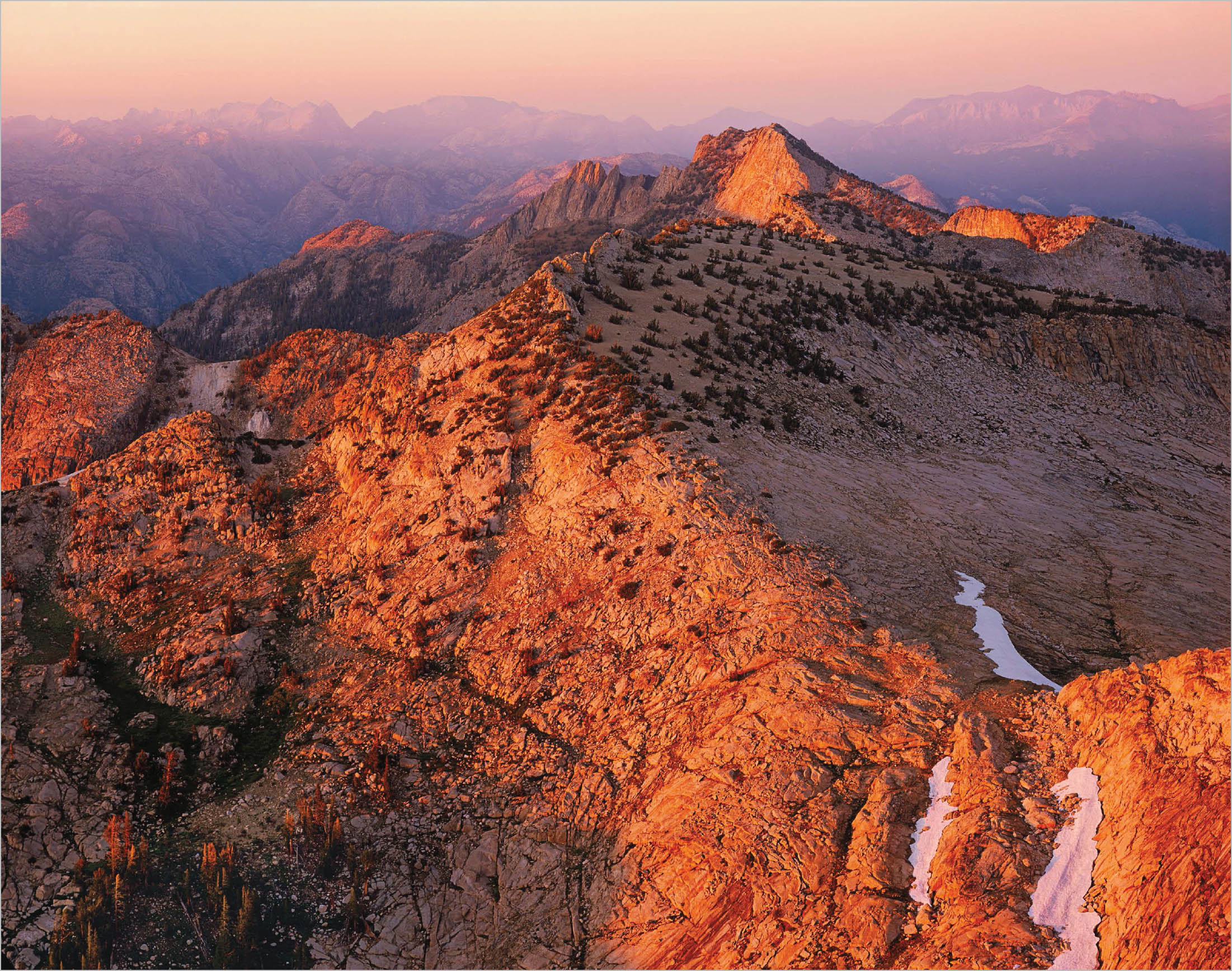A DANCE ON THE BEACH
FOCUS ON THE FUNDAMENTALS
I began teaching photography forty years ago. So much has changed since then—cameras, software, digital printing. It is such an exciting time for photographers, but it can be difficult to keep up with all the rapidly changing technology. After a couple of decades of using film, large-format cameras, and darkroom printing, I’ve managed to adapt. I switched to digital printing in 1993 and put the use of film behind me in 2005. I have no regrets.
In 2008 I began teaching workshops in Yosemite after a long break. It has been such a pleasure to share my enthusiasm for this great National Park with my fellow photographers once again. In the process of teaching these sessions, I realized that although the tools have changed over the years, the lessons I am teaching now are much the same as when I started. Here is a reader’s digest of what I teach:
Compose precisely: Watch the edges of your composition. Eliminate any distractions. Draw the viewer’s eye to your subject. Consider proportion and spacing of items within your frame.
Find great light: Get up early. Stay out late. Pick dynamic conditions for dynamic photographs. If the sky is boring, don’t include it. Watch the weather, learn the light, wherever you are. Don’t settle for “OK” light.
Be ready for inspiration: It will come if you have a sense of wonder about the world around you. Be ready to fail. Mistakes will happen and become our greatest lessons. Practice is the process of being ready for it all to come together! Trust your vision; you have a unique point of view. Having faith in yourself is critical.
You will become a better photographer if you focus on these fundamentals.
The tip I’d like to focus on in this essay is the willingness to push oneself creatively. This has been a key trait for me as I try to grow as an artist. I often see photographers giving up too soon, or not moving from one spot, or only trying a few variations. Photography is a dance of possibilities! Experiment with everything from camera and light angles, to shutter speeds, to lens choice. Have fun with the process. The risks taken will result in many failures, but they will also lead to new ideas and creative breakthroughs.
On a trip to the California coast, I was eager to photograph a local state beach at sunrise rather than the classic sunset hour. I got out there in the near darkness of dawn. It was a beautiful morning with warm glowing light, crashing waves, birds calling and scurrying to feed along the surf line. I started out with a broader and more typical view of the beach and arch formation that emphasized the sky colors. I was moving constantly, trying different options, focal lengths, and foregrounds, and playing with blurring the waves. I was especially intrigued with the natural arch formation, so my compositional arrangements began to zoom in more closely on just the arch and surf. I was having a great time when a flock of seagulls landed right in front of my viewfinder.
At first, I was frustrated with them “blocking” my view and wanted to chase them off. But then I decided to incorporate them into the photograph. I experimented with various shutter speeds, hoping to have gull impressions “painted” onto the beach. The resulting image that included the gulls pulls together my vision more strongly than the wider views. A few small tweaks in post-processing emphasized the mood of a misty scene backlit by the early morning sun with the ghostly birds like a dream. Although I am pleased with the more classic image of the scene, I was able to push myself to find a more creative and mysterious interpretation of my experience that morning.
Soon the gulls were gone, the good light passed, and I was famished, ready for breakfast after a joyful two-hour dance at the beach. Some things never change.
Sunset from Mt. Hoffman | Yosemite National Park, California | 1986
